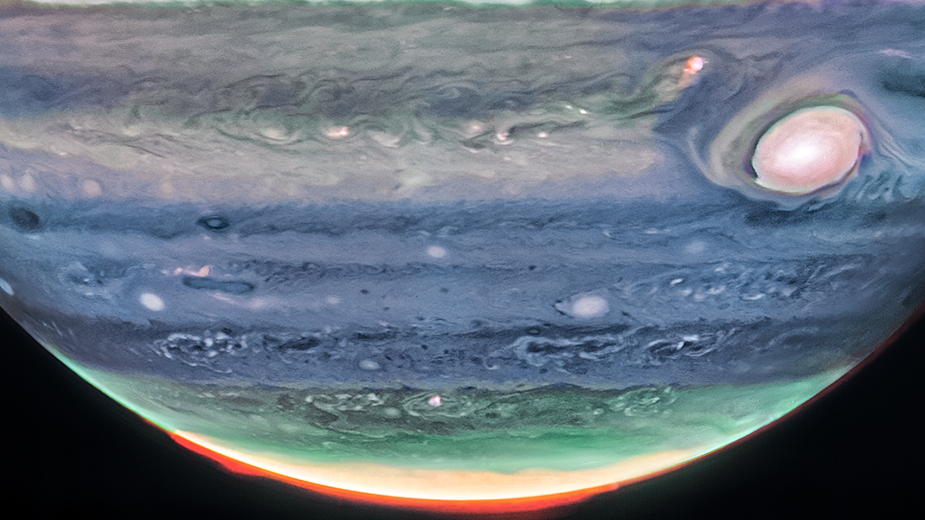(Image credit: NASA, ESA, CSA, STScI, Ricardo Hueso (UPV), Imke de Pater (UC Berkeley), Thierry Fouchet (Observatory of Paris), Leigh Fletcher (University of Leicester), Michael H. Wong (UC Berkeley), Joseph DePasquale (STScI))
Though NASA’s James Webb Space Telescope (JWST) was initially touted as having the power to unveil our universe’s furthest horizons — and it surely has — some of the observatory’s most gorgeous images are actually ones of our very own solar system.
With its gold-plated hive of mirrors and backpack of infrared equipment, such as the Near-Infrared Camera (NIRCam), the James Webb Space Telescope has reintroduced us to the stunning place we call home, making us feel like we’re seeing our planetary neighbors for the first time all over again. It even offered us a poignant view of Neptune‘s frail rings, something that hasn’t been done for 30 years.
But on Thursday (Oct. 19), scientists announced that, beyond offering us fresh eyes on the solar system, the JWST’s images of our cosmic neighborhood are also presenting us with new data about a planet we thought we knew quite well: Jupiter.
Images the observatory took of the gas giant last year have managed to show us brand new things about its moons, atmosphere and rings. (Yes, Jupiter has rings too!) Basically, after examining images the JWST captured of Jupiter in 2022, a team of researchers realized there’s a high-speed jet stream on the planet that’s more than 3,000 miles (4,800 kilometers) wide and traveling at about 320 mph (515 kph.) This is something that has never been seen before.
“That totally surprised us,” Ricardo Hueso of the University of the Basque Country in Bilbao, Spain and lead author on a paper describing the findings, said in a statement.
“It’s amazing to me that, after years of tracking Jupiter’s clouds and winds from numerous observatories, we still have more to learn,” Leigh Fletcher of the University of Leicester in the United Kingdom, a member of the new study, said in the statement.
What could this mean?
According to the team, this newfound jet stream on Jupiter — that’s blasting away at about twice the speed of a Category 5 hurricane on Earth and sits right above the equator — might shed some light on the planet’s turbulent atmosphere. In fact, all of those 2022 Jupiter images might help researchers deduce what goes on in the skies of the apricot-striped orb.
“What we have always seen as blurred hazes in Jupiter’s atmosphere now appear as crisp features that we can track along with the planet’s fast rotation,” Hueso said.
Jupiter is notorious for its extreme weather; you might’ve heard of Jupiter’s Great Red Spot, for instance, which is a never-ending, enormous storm that’s so huge it’s visible from our vantage point on Earth with a regular old optical telescope. And, importantly for science investigations, Jupiter’s atmosphere is layered, like Earth’s. This means wind speeds in different layers are probably contributing to the giant planet’s tumultuous climate.
It’s also why Hueso and fellow researchers hope to compare what the JWST’s infrared vision has seen among Jupiter’s high-altitude atmospheric layers — which revealed the new jet stream via some cloud-related features — with what the Hubble Space Telescope has already seen in deeper layers. Hopefully, that’ll give us a pretty clear picture of those wild Jovian winds.
